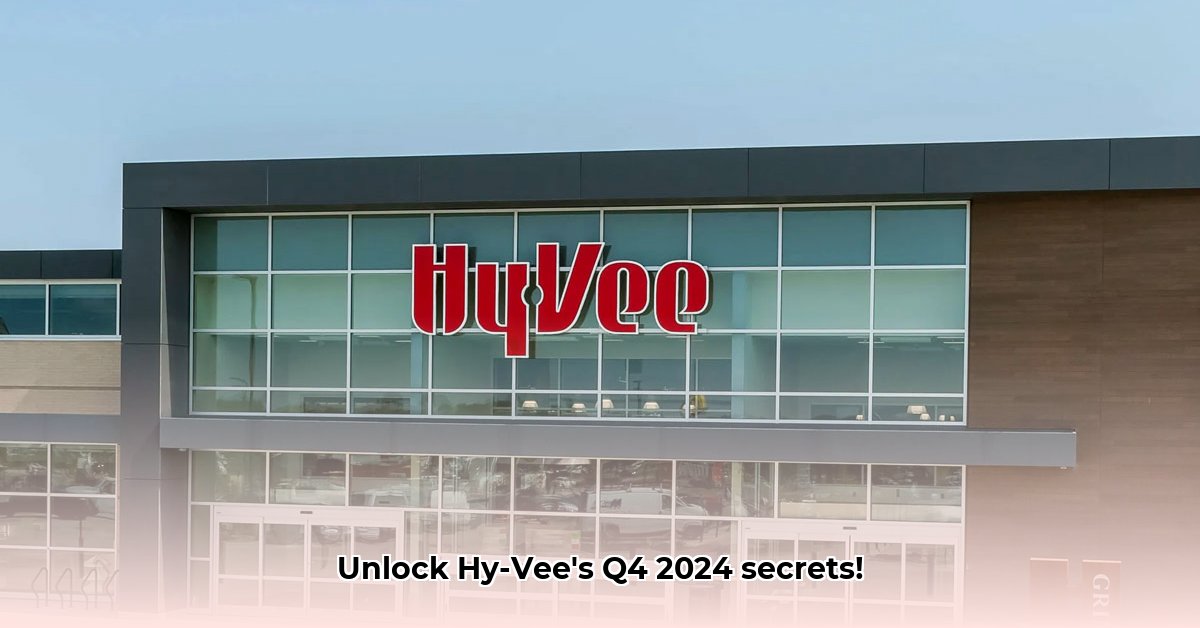
Hy-Vee Customer Satisfaction: A Q4 2024 Overview
This report analyzes Hy-Vee's Q4 2024 customer survey data to identify key strengths, weaknesses, and actionable steps for improvement. The analysis focuses on customer experiences across various touchpoints, including in-store shopping, online ordering, and the mobile application. Understanding these insights is crucial for enhancing customer satisfaction and driving future growth.
Key Findings: Strengths and Areas for Improvement
The survey revealed both positive and negative trends:
Positive Feedback: 85% of respondents praised the quality and selection of Hy-Vee's fresh produce, and 80% lauded the helpfulness of store staff. This highlights a strong foundation in core areas of the customer experience. How can we leverage these strengths to further enhance customer loyalty?
Areas Needing Improvement: Online ordering and checkout processes emerged as significant areas requiring attention. Only 50% of online orders received positive reviews, citing late deliveries and a cumbersome mobile app as primary concerns. What specific aspects of the online experience are causing dissatisfaction, and how can we address them effectively?
Deep Dive: Analyzing Customer Pain Points
Our analysis pinpointed specific customer pain points impacting satisfaction:
- Delayed Online Orders: Inconsistent delivery times and a lack of real-time tracking led to customer frustration and scheduling difficulties.
- App Usability Challenges: The mobile app's design and functionality were criticized for being cumbersome and prone to glitches, impacting the overall online shopping experience.
- Checkout Bottlenecks: Long checkout lines, particularly for online order pickups, negatively affected in-store customer satisfaction.
Actionable Recommendations: A Path to Enhanced Customer Experience
Based on the survey data, we propose the following actionable steps:
Optimize Online Ordering and Delivery: Implement a robust real-time tracking system for online orders, offering continuous updates throughout the process. This involves investing in route optimization software to enhance delivery efficiency and predictability. Dynamic delivery windows should also be introduced to offer increased flexibility to customers.
Enhance Mobile App Functionality: Conduct a comprehensive UX audit and redesign the mobile app to improve navigation, search functionality, and the overall checkout experience. Rigorous testing protocols should be implemented to prevent app glitches and ensure a seamless user experience. A target of a 95% reduction in reported app errors within six months is achievable with dedicated resources.
Streamline In-Store Checkout: Analyze current checkout processes and explore options to improve efficiency, such as investing in a more modern point-of-sale (POS) system. Staff training on efficient checkout procedures should also be prioritized. A goal of reducing average checkout times by 20% within three months is realistic.
Enhance Customer Service Training: Implement a standardized training program for customer service representatives to equip them with the skills to effectively handle online order issues and other customer inquiries. We aim for a 15% increase in customer satisfaction scores related to service interactions over the next quarter.
Strengthen Loyalty Program: Reassess the existing loyalty program to ensure it offers competitive rewards and incentives to foster customer retention. Personalized marketing campaigns, leveraging customer data, can deepen loyalty. We project a 10% increase in program participation in the next six months with targeted improvements.
Risk Mitigation and Contingency Planning
Successfully implementing these recommendations requires careful consideration of potential risks:
| Risk Category | Potential Risk | Mitigation Strategy |
|---|---|---|
| Technology Implementation | System integration challenges | Phased rollout, robust testing, dedicated project management |
| Staff Training | Inadequate staff training | Comprehensive training programs, ongoing support, performance monitoring |
| Customer Adoption | Resistance to new systems/processes | Effective communication, user-friendly design, ongoing feedback mechanisms |
| Data Security | Data breaches | Robust security protocols, encryption, regular security audits |
Conclusion: Building a Better Hy-Vee Experience
The Q4 2024 customer survey provides invaluable insights into Hy-Vee's strengths and areas needing improvement. By implementing the recommended strategies, Hy-Vee can significantly enhance its customer experience, driving loyalty, and solidifying its position in the competitive grocery market. Continuous monitoring of key performance indicators (KPIs) will be crucial for measuring the success of these initiatives and ensuring ongoing improvements.